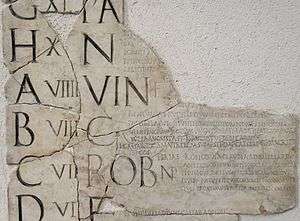Eight-day week

Some historical calendars had "weeks" of eight days.
Burma
In the Burmese version of Theravada Buddhism, the week has eight days. Wednesday is divided into Wednesday proper (midnight to noon) and Rahu (noon to midnight). Each day is associated with a compass direction, a planet, and a totem animal.
Nundinal cycle
The ancient Etruscans developed an eight-day market week known as the nundinal cycle around the 8th or 7th century BC. This was passed on to the Romans no later than the 6th century BC. As Rome expanded, it encountered the seven-day week and for a time attempted to include both. The popularity of the seven-day rhythm won and the eight-day week disappeared.
The cycle of seven days, named after the sun, the moon, and the five planets visible to the naked eye, was already customary in the time of Justin Martyr, who wrote of the Christians meeting on the Day of the Sun (Sunday).[1]
Emperor Constantine eventually established the seven-day week in the Roman calendar in AD 321.[2]
Celtic calendar
The Celts used periods of darkness such as night and winter to begin their calculations of time. This meant that the first period of time in a "week" was a night, followed by a day. Further, they also counted the ending night period, giving rise to periods of time with more nights than days. In Irish, the term nómad is used to signify a small number of days and is exactly the length of the nine night week as in co cend nomaide - a period of time with nine nights bracketing eight days. The nine nights divided nicely into a sidereal month of 27 nights. In Welsh a similar word wythnos meaning "a week" literally means "an eight-night" since it started and ended with a period of night bracketing seven days. Similarly a fortnight pythefnos means "a fifteen night".[3][4]
References
- ↑ Apology, chapter LXVII
- ↑ Zerubavel, Eviatar (1989). The Seven Day Circle: The History and Meaning of the Week. University of Chicago Press. ISBN 9780226981659.
- ↑ Rhys (1840-1915), Sir John (1892). Lectures on the Origin and Growth of Religion as Illustrated by Celtic Heathendom. pp. 360–382.
- ↑ The Welsh people: chapters on their origin, history, laws, language ... - Sir John Rhys, Sir David Brynmor Jones - Google Books. p. 220. Retrieved 2012-10-22.